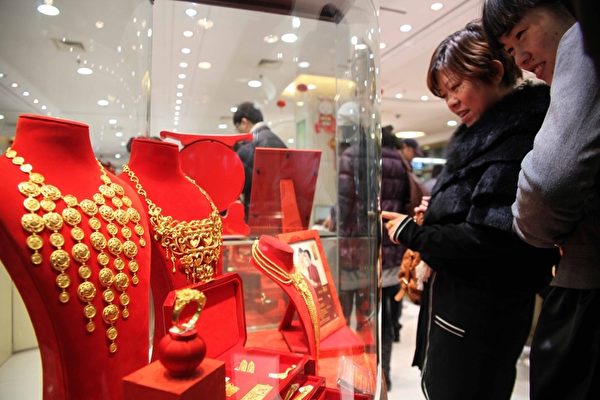On Monday, July 28th, the Chinese listed company Lao Pu Gold is expected to see a year-on-year increase in net profit in the first half of 2025. However, its stock price has once again dropped, plummeting by over 4% at one point during trading, reaching the lowest level since May 20th, marking the ninth consecutive trading day of decline.
On the evening of July 27th, Lao Pu Gold announced that it expects to achieve sales revenue (including tax income) of approximately 13.8 billion to 14.3 billion yuan in the first half of 2025, representing a year-on-year growth of about 240% to 252%. The net profit is expected to be around 2.23 billion to 2.28 billion yuan, a growth of about 279% to 288% compared to the same period last year. However, starting from July 9th, 2025, Lao Pu Gold’s stock price has been on a continuous decline from the high of 1,080 Hong Kong dollars per share.
Analysts at Citigroup attributed the fall in Lao Pu Gold’s stock price to the resetting of market expectations and “capital repatriation,” adding that the stock is currently relatively cheap.
A research report by Morgan Stanley on Monday stated that the downward revision of earnings expectations in the market and concerns about the rise in gold prices have caused the stock to retreat from its peak in early July.
UBS previously reported that based on their conversations with investors, the consensus on Lao Pu Gold’s profit expectations for 2025 ranged from 4 billion to 6 billion yuan, reflecting a year-on-year increase of 170% to 300%. However, UBS believes these expectations are on the high side and points out short-term downside risks including gold price fluctuations, varied financial reports from different stores, and the possibility of a yearly decline in gross profit margins. Another downside risk is the potential profit-taking by shareholders.
Meanwhile, as brands like Chow Tai Fook gradually penetrate the traditional gold market, Lao Pu Gold is facing numerous challenges.
Bubble Mart, a maker of lab-grown diamonds, had released an optimistic profit forecast for the first half of 2025 earlier this month, but its stock listed in Hong Kong initially declined in response to this news.
A survey by Awei Consulting released last week showed that affluent Chinese consumers have a stronger negative sentiment towards the economy compared to the period of the pandemic. Many respondents are shifting their spending from luxury goods to experiential consumption, such as travel.
Furthermore, data released by the Hong Kong Census and Statistics Department on Monday indicated that the total amount of gold imported into Hong Kong from China in June was 34.72 tons, a nearly 40% decrease from the 57.76 tons in May.
The China Gold Association stated last week that gold consumption in China in the first half of 2025 decreased by 3.5% compared to the same period last year, amounting to 505.2 tons.
Data released by the Chinese Customs on July 20th showed that for the second consecutive month, the import of gold into China in June had decreased.

